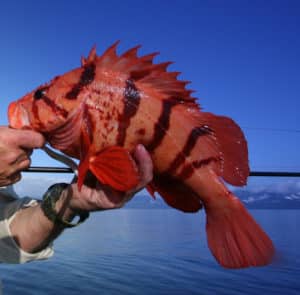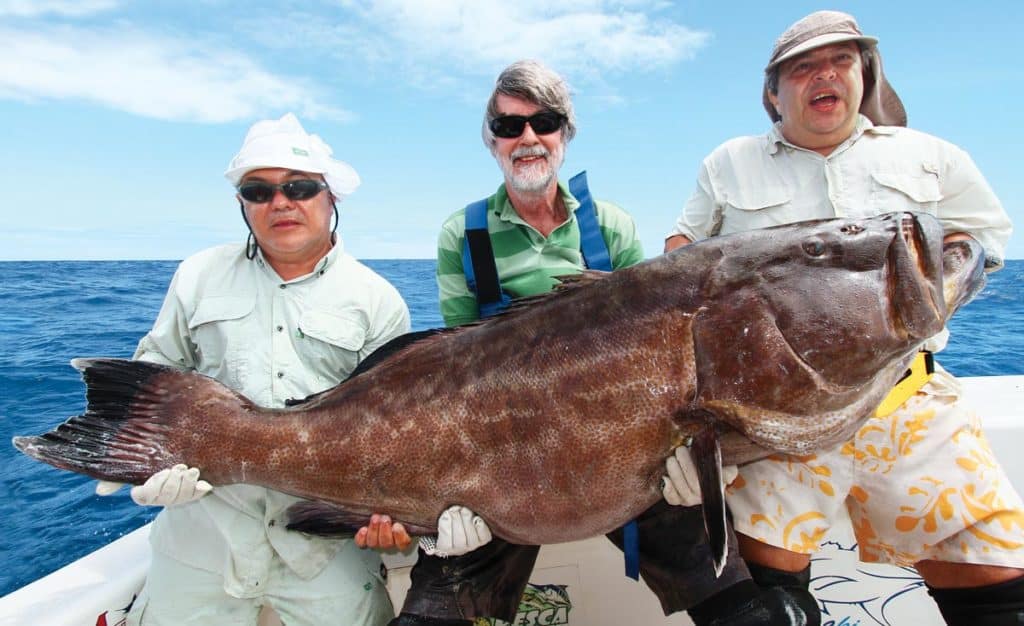
You know the cliché: “You won’t die; you’ll just wish you had.” If there were ever an ailment for which this adage rings far too true, it’s ciguatera fish poisoning.
Ironically, this most common form of nonbacterial fish poisoning around the world remains a mystery to most people — including those who particularly need to know: saltwater anglers.
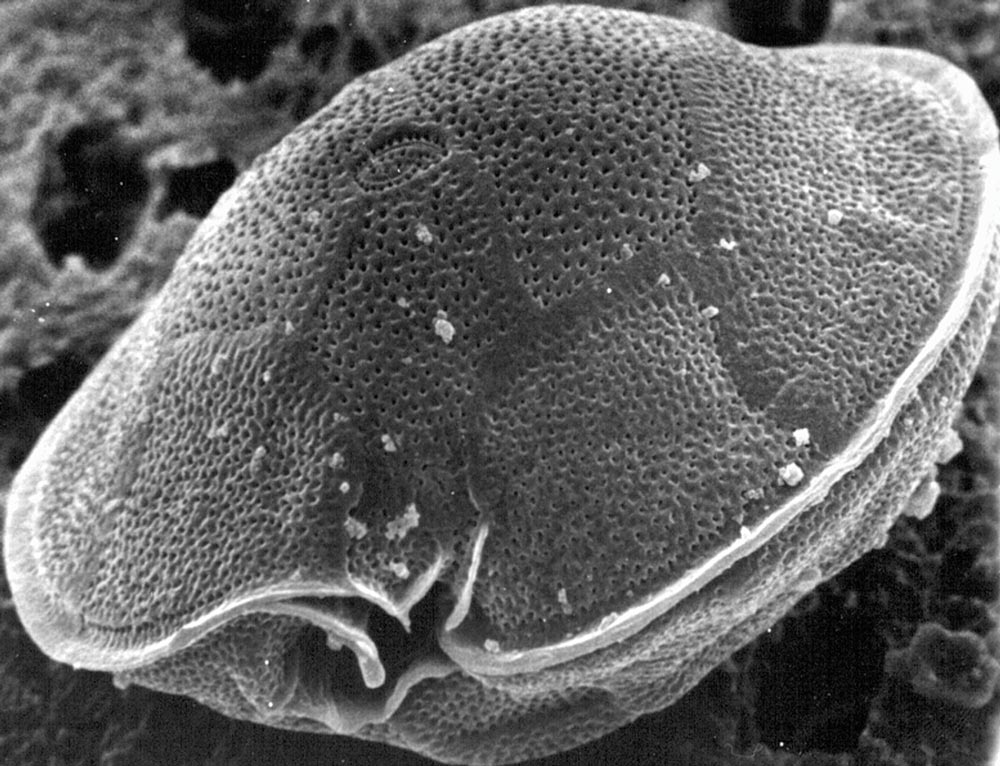
And while few might know about ciguatera (pronounced sigWAHterra), no one who’s ever contracted the ailment, symptoms of which can recur for years, will ever forget it.
“A living hell” — that’s the phrase that Kevin Deutsch used to describe the “agony at sea” that a group of anglers went through for eight days after eating a meal of delicious yellowfin grouper. “Stuck out at sea, the men wasted away for eight days before feeling well enough to venture back,” he wrote in a Palm Beach Post story. He quotes one angler, who dropped 14 pounds, as saying, “It was the worst I ever felt” and “If I touched anything cold, it burned my skin.”
A Texas woman who contracted ciguatera fish poisoning told news outlets that the symptoms were “horrible. I couldn’t walk on the tile floor; it felt like it was burning me.”
Nervous System Gone Haywire
“It was a great lunch,” recalls Julian Pepperell of his coral trout dinner in a northeastern Australian restaurant. He rates the colorful Indo-Pacific grouper as “one of the best-eating (and highest-priced) fish on the reef.”
That night at about 1 a.m., he “awoke with intense muscle aching in my thighs and buttocks. I felt like I had run a marathon and could hardly get out of bed.” But staying in bed wasn’t an option: Pepperell also suffered acute nausea and diarrhea. Then his palms and soles began to itch excruciatingly, turning bright red.

By the next evening, a weak Pepperell had recovered enough to stop for a beer at the local watering hole. “Soon, my palms and soles started to itch and turn red again, and then the penny dropped! Alcohol triggers symptoms of ciguatera poisoning. And I had eaten coral trout, a species implicated in the disease.”
Pepperell would know of ciguatera since he’s one of Australia’s preeminent fisheries scientists. Most victims — and physicians — don’t have a clue, however, when they find themselves blindsided by a double whammy of gastrointestinal explosions coupled with a nervous system gone haywire.
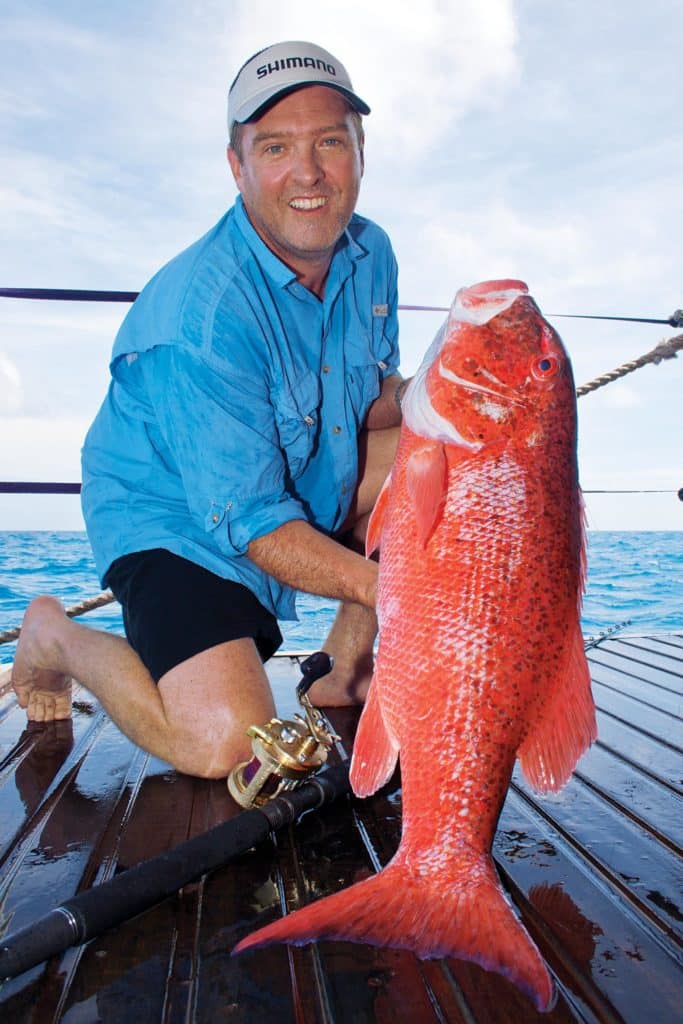
Symptoms of Ciguatera Fish Poisoning?
Although 50,000 or so ciguatera cases are reported worldwide each year, health officials estimate several times that number go unreported or misdiagnosed. Frequently, neurological symptoms lead physicians to diagnose the onset of multiple sclerosis.
One reason Pepperell didn’t guess what ailed him on that first night: the absence of the prevalent, most “classic” ciguatera symptom — hot and cold reversal. That means a victim senses an ice cube as if were a burning-hot coal or, conversely, a warm bath as a tub of ice water.
But ciguatera presents with a confounding variety of (sometimes bizarre) symptoms, especially neurologically. In Pepperell’s case, “a weird thing I experienced for the next several months was a sensation when I stood up and took a few steps — I felt as if I’d stepped into a hole, so my body didn’t seem to register that my feet were actually making contact with the ground!” Pepperell says he learned later that “this definitely can be another symptom of ciguatera, [stemming from its] effect on peripheral nerves.”
Deadly Plankton
The ailment’s name doesn’t explain much but reveals that this nasty fish poisoning has been around for a long time. Spanish explorers who described it very clearly in the 1500s attributed it to a small snail they called the cigua.
What actually causes ciguatera is far smaller and more insidious than a snail. A type of plankton, appropriately named Gambierdiscus toxicus, produces ciguatoxin. G. toxicus is fond of attaching itself to marine algae on coral reefs. Small fish that eat the algae accumulate the fat-soluble toxin. As larger predators eat these herbivores and are in turn eaten by still larger fish (you know, the size you like to throw in your fish box), concentrations of the toxin — which, by the way, affect only mammals — increase geometrically.
Such fish become time bombs for people unlucky enough to eat them.
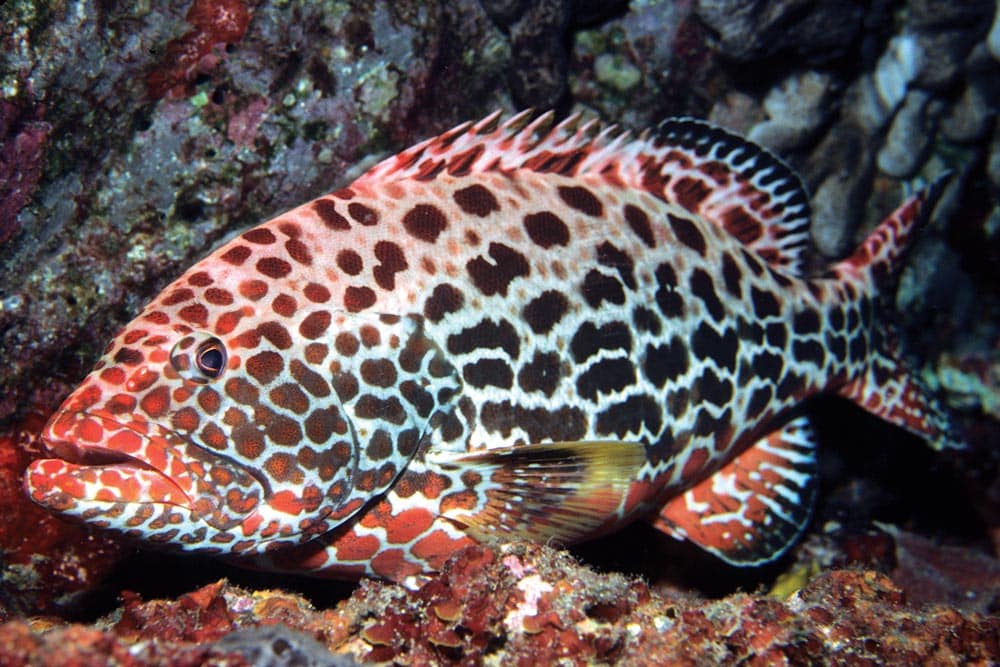
Beware the Reef’s Biggest and Baddest
Given the source of this toxin, anglers have little reason for concern with any cold-water game fish nor, for the most part (though not always), with open-ocean pelagics. The association of Gambiendiscus with coral reefs makes it common in tropical fish. A wide range of species that inhabit tropical reefs and/or eat reef fish can concentrate enough ciguatoxin to be a danger.
A host of well-established bad actors frequently implicated in ciguatera poisonings include amberjack, hogfish (a type of wrasse), cubera and mutton snappers, many other jacks such as black jacks and giant trevally, and many species of grouper — including the widespread coral trout that nailed Pepperell, and particularly the lovely Caribbean yellowfin grouper (note its scientific name, Mycteroperca venenosa, the latter meaning “poisonous”). But the list is long and also includes king mackerel, triggerfishes, wrasses, parrotfishes and dozens of others.
Most notoriously associated with ciguatera by those who live in tropical waters would have to be the great barracuda and red bass. The latter is one of the most common members of the snapper family around much of Australia and the Indo-Pacific, a very aggressive shallow-reef-loving fish widely sought by anglers.
Russian Roulette
If fish eaters who live in the tropics lack knowledge about ciguatera, those who live far inland know even less. It’s unlikely that dozens of diners ever heard of the disease when they indulged in tasty dinners of fresh Gulf of Mexico amberjack in various St. Louis eateries in December 2007. They know about it now, having found out the hard way, with many hospitalized after a typical incubation period as short as 10 minutes or as much as days after ingestion.
Consumers in Canada learned of ciguatera when the Canadian Food Inspection Agency warned the public against consuming a brand of leatherjacket — a large species of smooth puffer — imported from China after ciguatera reared its ugly head, victimizing at least two diners.
Eating amberjack or, in fact, any of these fish, even large barracuda or snapper, does not mean you’re doomed to come down with the disease. Far from it: Around the world, people eat these fish every day with no problem.
On the other hand, one can’t entirely rule it out in many instances, and therein lies the rub. It’s like Russian roulette, albeit with one bullet in a clip that can hold thousands of rounds, not just six. Still, it’s one bullet you don’t want to bite.
Ciguatoxin is particularly treacherous in a number of respects. For one thing, it’s heat stable, so cooking doesn’t faze it. Nor is it bothered by freezing. In other words, if it’s in a fish’s flesh, nothing you can do will get rid of it.
Here’s more treachery: The toxin has no effect on the fish’s flesh. You can neither smell nor taste it. In short, it’s pretty much undetectable.
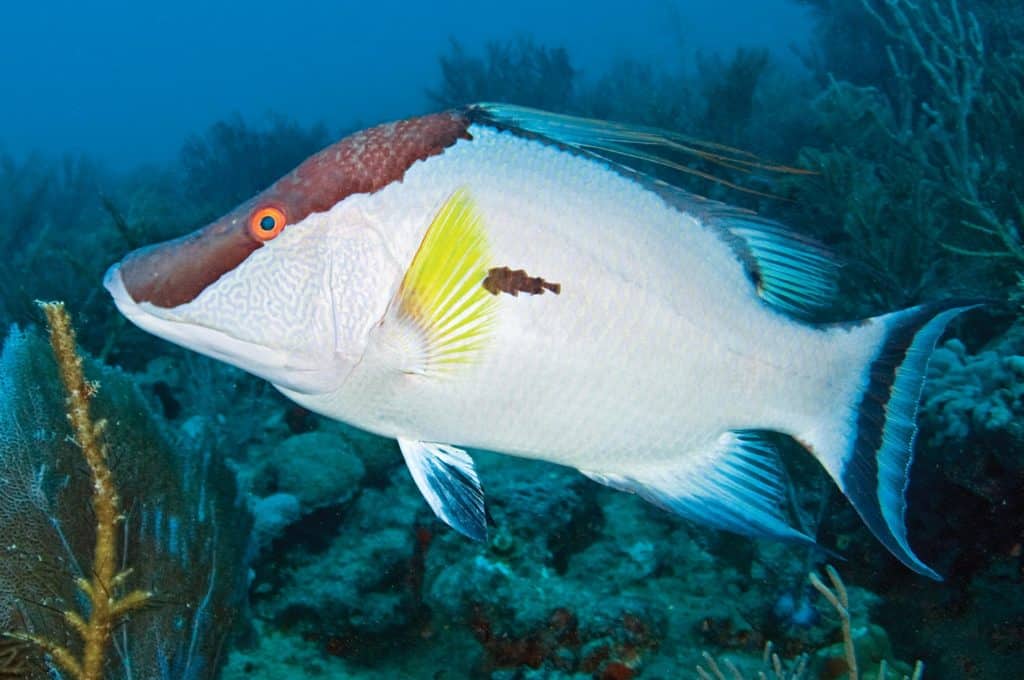
Reducing Your Risk of Contracting Ciguatera
Never eating any fish that live in or around coral reefs would probably assure you of avoiding ciguatera, though such a step is a bit drastic. But you can reduce the odds even further in your favor that your favorite fish, whether caught or bought, won’t prove host to the toxin.
Consider the size. The larger the reef fish, the more likely it is to be ciguatoxic. That makes sense since the toxin concentrates, like mercury, as it moves up the food chain. I’ve heard various rules of thumb — e.g., any fish less than 5 pounds is safe and some no more than 2 pounds. There is no hard-and-fast rule, but it’s empirically evident that larger fish generally account for outbreaks. (The owner of one of the St. Louis restaurants serving meals unaware from a ciguatoxic 60-pound AJ told a newspaper reporter he now understood big fish could be problematic, so he wouldn’t serve any amberjack exceeding 25 pounds in the future. In fact, that arbitrary cutoff probably means little.) As an angler, you have the opportunity to throw back larger predators if you wish (unlike diners, who have no way of knowing how large a fish provided the fillets on their plate).
Consider where and when caught. Some areas are hotbeds for G. toxicus. Often this is well known locally. For example, Ray Waldner, Ph.D., a well-known fisheries biologist, cites Cuba (especially for hogfish) and the Dry Tortugas in the Caribbean. Fish from Bahamas reefs have been implicated over the years as well. Yet there are many tropical regions where the disease remains virtually unknown. But just to complicate matters, reef areas apparently historically free from ciguatera can become “infected” at any time, while those infected can later become ciguatera free.
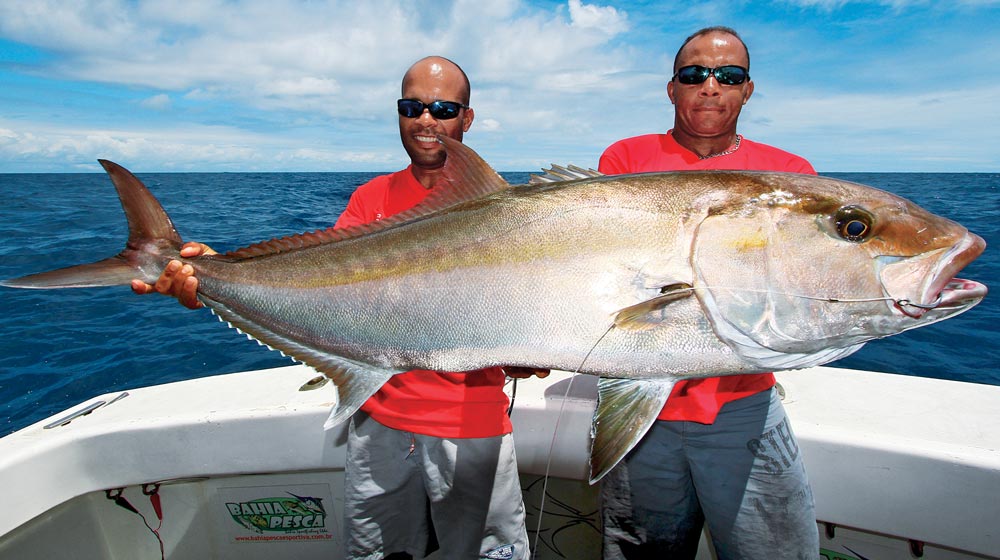
Unpredictable Outbreaks
The U.S. Food and Drug Administration warned fish processors to buy no fish caught within 50 miles of the productive Flower Garden Banks far off the Texas coast following ciguatera outbreaks in 2007. Not a single incidence of ciguatera had been attributed to the waters off Texas in recent memory but then, suddenly, there it was, with many cases of ciguatera from fish caught in the area.
I’ve fished some large Pacific atolls where the islanders commonly eat all fish from one end of the atoll while shunning them from the other side. For whatever reason, apparently the toxic phytoplankton had bloomed just in one area.
No one is certain why Gambiendiscus does bloom when and where it does, or why it endures in some areas or fades in others. Many factors might be involved, including water temperature and quality. But scientists believe the opportunistic plankton take advantage of increased algae growth on coral reefs that have been disrupted or degraded, whether by natural causes such as hurricanes or by humans from pollution, dredging and the like. Some have pointed out that reef communities growing on oil rigs and platforms might also provide new opportunities for Gambiendiscus.
Eight Days of Living Hell
I alluded previously to a disease that made its victim wish he or she were dead. It’s important to understand that not all individuals eating ciguatoxic fish will suffer similarly. Indeed, some might remain completely asymptomatic; others might take a (relatively) mild hit, with symptoms limited mostly to gastrointestinal distress for a day or two. However, many victims are beset with a host of agonizing symptoms that can continue or recur over days, weeks or even years.
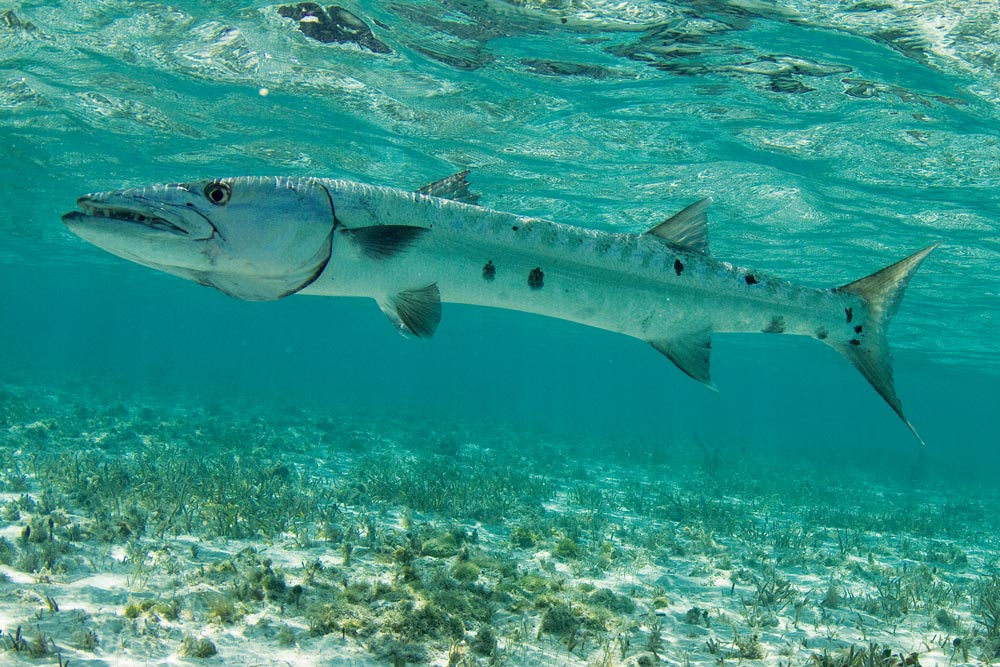
While ciguatera episodes generally do start out typical of most food poisonings, the effect of this neurotoxin on the nervous system is most likely to be both acute and chronic, miserable and frightening.
Among the affliction’s many symptoms:
- hot and cold reversal
- intense pain in one’s teeth and sometimes the feeling that all of one’s teeth are loose
- intense and burning itch
- numbness or tingling in extremities
- sharp, shooting pains in arms and legs, and/or heightened sensitivity to pain
- pain when urinating
- blurred vision, dizziness
- various abnormal sensations
- malaise, physical weakness, extreme fatigue
- slowing of the heart
- hallucinations
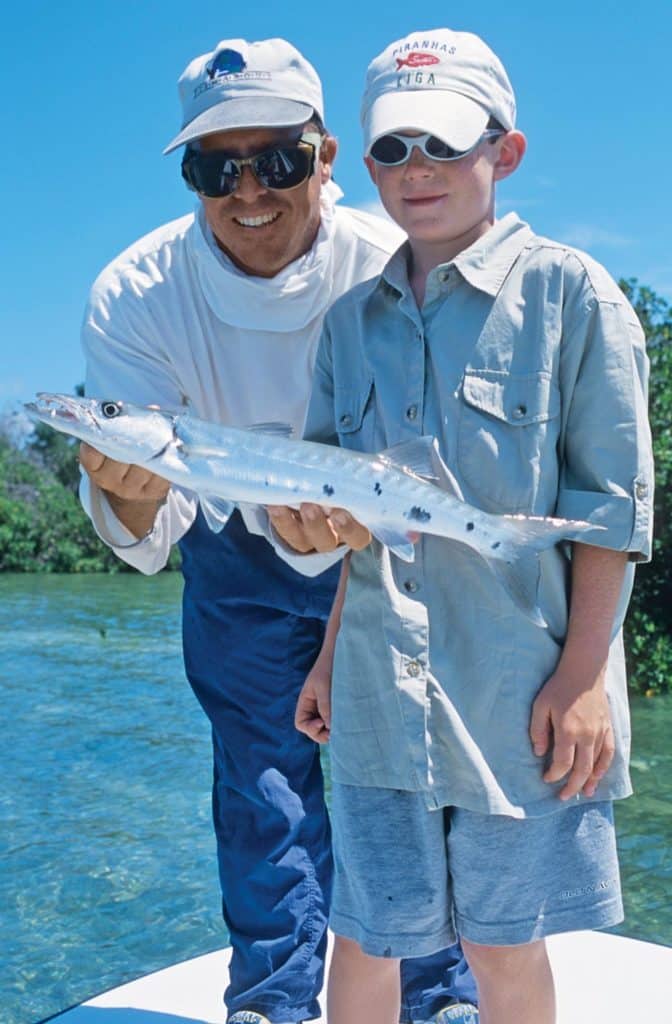
Regarding the last, “Today I am experiencing a new symptom: hallucinations.” So wrote a South African victim in a blog after he’d eaten some “great-tasting” barracuda (and also received an initial diagnosis of multiple sclerosis). He describes his visions as “dots that float around the room as if they have some sort of purpose.”
Being unable to identify anything hot, since it feels cold to the touch, could even lead to scalding. One Australian marine biologist writes, “I had an enormous amount of difficulty telling if something was hot and had someone else run showers for me for two months.”
The array of symptoms often masks the ailment. For example, a Kalamazoo, Michigan, ciguatera victim was diagnosed with MS. Five weeks later, after MRI scans, visits to neurosurgeons and four trips to the emergency room, she finally received the right diagnosis: ciguatera, contracted during a visit to the Dominican Republic 10 days before the onset of symptoms.
Just When You Thought It Was Safe
If there’s any good news for those who contract the illness, nearly all sufferers live through it. Most recover in days or weeks, though granted, those generally mean some mighty miserable weeks.
But various symptoms often persist and, to make matters worse, certain triggers can induce symptoms with greater severity, even years later. Alcohol appears to be the most likely such trigger — as Pepperell found out over a beer in his favorite Aussie pub.

Another trigger: eating fish — apparently any fish! For example, Waldner cites the case of a University of Puerto Rico marine-science professor who contracted ciguatera from eating a piece of fresh almaco jack. “It took him months to recover,” says Waldner, and the man steered clear of fish for a year. Then he had a meal of dolphin (mahi). Big mistake. “Although dolphin is considered to be a ‘safe’ species,” says Waldner, “the meal resulted in full-blown ciguatera poisoning again.”
Waldner explains that apparently some ciguatoxin remains in the blood of one who’s contracted the disease; after several months, toxin levels in the Puerto Rico prof gradually dropped below a threshold, so he suffered few or no symptoms. But presumably, even a minute amount of the toxin from a source — such as the dolphin — can be enough to cross the threshold. “It’s conceivable that older folks who come down with ciguatera may never be able to safely eat fish again,” Waldner adds.
But wait — there’s more. Ciguatera victims cite a number of other triggers all-too-well documented over many years, including eating nuts, chicken or eggs, drinking caffeine, and exposure to certain chemicals or fumes. Hard exercise, particularly in a hot environment, can bring on an attack. And, to pile on further insult, so can sexual activity.
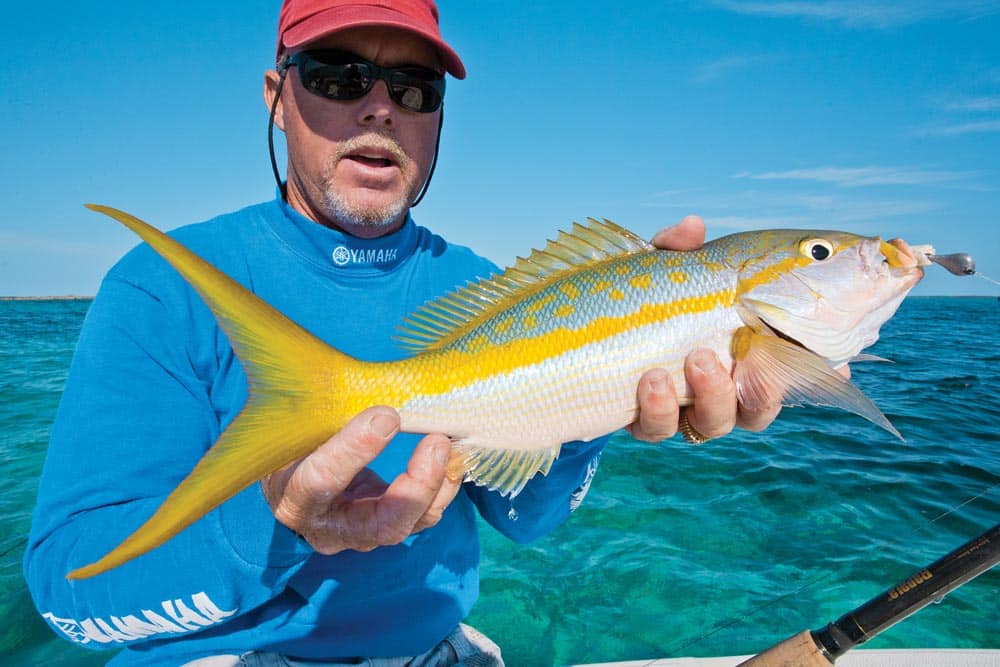
Treatment for Ciguatera Fish Poisoning
Nearly always, by the time a ciguatera victim gets the proper diagnosis, there’s no treatment, and beyond (marginal) success in mitigating symptoms, there’s going to be a whole lot of suffering going on.
That said, in recent years, it has seemed that mannitol — a sugar alcohol — given intravenously could help (though no one ever determined exactly why or how). But a check of literature on this shows mannitol to be variously helpful if administered with 48 hours of onset to absolutely worthless, depending upon the study.
The drug Brevenal appears to hold promise, perhaps as the first real treatment for the disease. Scientists discovered that this patented polyether compound could treat neurotoxic shellfish poisoning (typically a result of red tides) in humans. That toxin is related to ciguatoxin, so scientists in Australia and North Carolina acted (independently) on a hunch that Brevenal might treat ciguatera as effectively. The Brevenal apparently blocks the effect of ciguatoxin on sodium channels in cells, since that’s what causes the nervous system to start going haywire.
Ciguatera is a very scary disease. It’s also one of the most common ailments from eating fish and considered a global health concern (that might be getting worse). All that said, your odds of getting it remain very low indeed. But the risk is there, and a little knowledge can go a long way to avoid it, especially for those of us who catch our seafood, and can pick and choose what we keep — keeping only smaller reef fish if we’re after real peace of mind. And it’s good to recognize the symptoms of the disease for what it is, should you or someone you know be suddenly laid low by a mysterious ailment after eating a meal of delicious fresh fish.

Symptoms: It’s All About Location
It seems that where one contracts ciguatera can make a difference in the nature of the ailment. That is, victims in the Caribbean region are more likely to suffer greater acute gastrointestinal distress with a more gradual onset of neurological effects than victims from the far Pacific, where neurological symptoms prevail and might be worse. The reason probably has to do with the composition of the toxin produced by the different species of Gambiendiscus. Of course exceptions abound, and the bottom line remains the same: Wherever you get ciguatera, it pretty much sucks.

